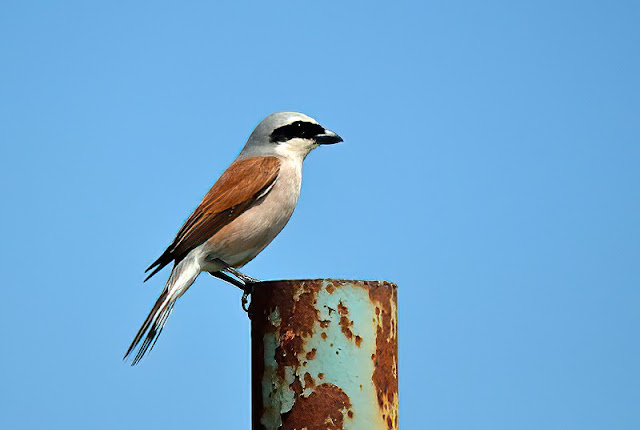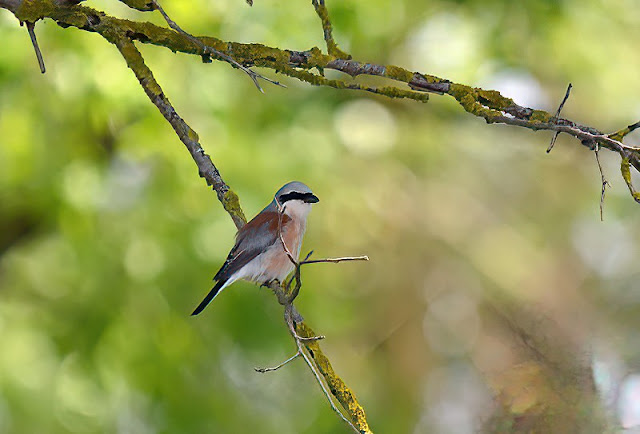This morning I visited RSPB West Canvey Marshes which is around 9 miles from home and relatively easily reached by public transport.
RSPB West Canvey Marshes is part of the RSPB South Essex Reserves network including RSPB Canvey Wick, RSPB Bowers Marsh and RSPB Vange Marsh, all of which I have visited many times including the last only last week (see here).
RSPB West Canvey Marshes is historically grazing marsh and
is now managed as a reserve comprising of important habitats including a mix of grassland, scrub, lagoons, marshlands,
reedbeds, saltmarsh and mudflats. This provides feeding and
breeding grounds for wintering, migratory and breeding birds. It also supports
a range of important protected species such as Water Voles and reptiles by
providing managed habitats such as ditch networks, meadows and fields.
RSPB West Canvey Marshes has 4 miles of visitor access with over 2 miles of this being permissive nature trails and almost 2 miles again of public footpaths along the perimeter of the site. Permissive nature trails on the reserve head east to west across the site leading from the car park to 4 wildlife viewpoints via dry grassland, scrub and hedgerow habitats. The 4 viewpoints overlook various waterbodies which hold water throughout the year attracting various wetland birds. Public footpaths follow the seawall adjacent to Easthaven Creek and are uneven rough grassland tracks.
This was only my second visit to RSPB West Canvey Marshes, the main purpose being to see and photograph a first-winter juvenile Red-backed Shrike which had been reported over the 2 previous days. Despite much searching and scanning of the scrub habitat in the area where this bird had previously been reported, none of the birders present managed to see it. Those frustrated and disappointed at this "no show" included Matt Turner and Steve Grimwade (from Essex Birdwatching Society and co-presenters of the excellent "Birds of Essex" on YouTube) who I bumped in to on site.
I have seen Red-backed Shrikes in the UK before but only on 3 previous occasions, the last being as far back as 2007. This species is now an extremely rare breeding bird in the UK although it can be seen as a reasonably regular passage migrant in small numbers in spring and early summer (May and June) and in autumn (August to October) on the south and east coasts of the UK as far north as northern Scotland.
I have also seen Red-backed Shrikes many times on my trips to eastern Europe where it is still a common breeding bird in the open countryside. Here are some of my photos ....
Photo: male Red-backed Shrike at Durankulak, Dobrich Province, Bulgaria
Photo: male Red-backed Shrike at Durankulak, Dobrich Province, Bulgaria
Photo: male Red-backed Shrike between Mehikoorma and Haavametsa, Estonia
Photo: male Red-backed Shrike between Mehikoorma and Haavametsa, Estonia
Photo: male Red-backed Shrike between Mehikoorma and Haavametsa, Estonia
And here is the Red-backed Shrike at RSPB West Canvey Marshes which I didn't see!
Great to see the juvenile red-backed shrike on RSPB’s West Canvey Marshes yesterday. Gorgeous bird. @Natures_Voice #birding #NaturePhotograhpy #wildlife #wildlifephotography pic.twitter.com/Pu51f4iTpn
— David Pallash (@davidpallash) August 27, 2023
Fortunately, my visit to RSPB West Canvey Marshes wasn't a complete waste of time since I did find the previously reported migrant female Common Redstart, a species that I have only seen very rarely in Essex.
Other species recorded on a relatively quiet visit were as follows: Swallow (3), Reed Bunting (3), Greenfinch (4), Goldfinch (c.20), Kestrel (2), Lapwing (3), Mute Swan (1), Mallard (9), Coot (1)
#DefendNature .... Please help save and enhance our laws that protect our environment and wildlife
💚🦆 🦉🦋🐝🦊🦡🌼 🌳💚
Stay safe, stay well, stay strong, stay connected with nature







No comments:
Post a Comment
If you feel like commenting on my blog, you can contact me by completing the comment form below. I will respond to all comments and enquiries and constructive criticism will always be welcomed.